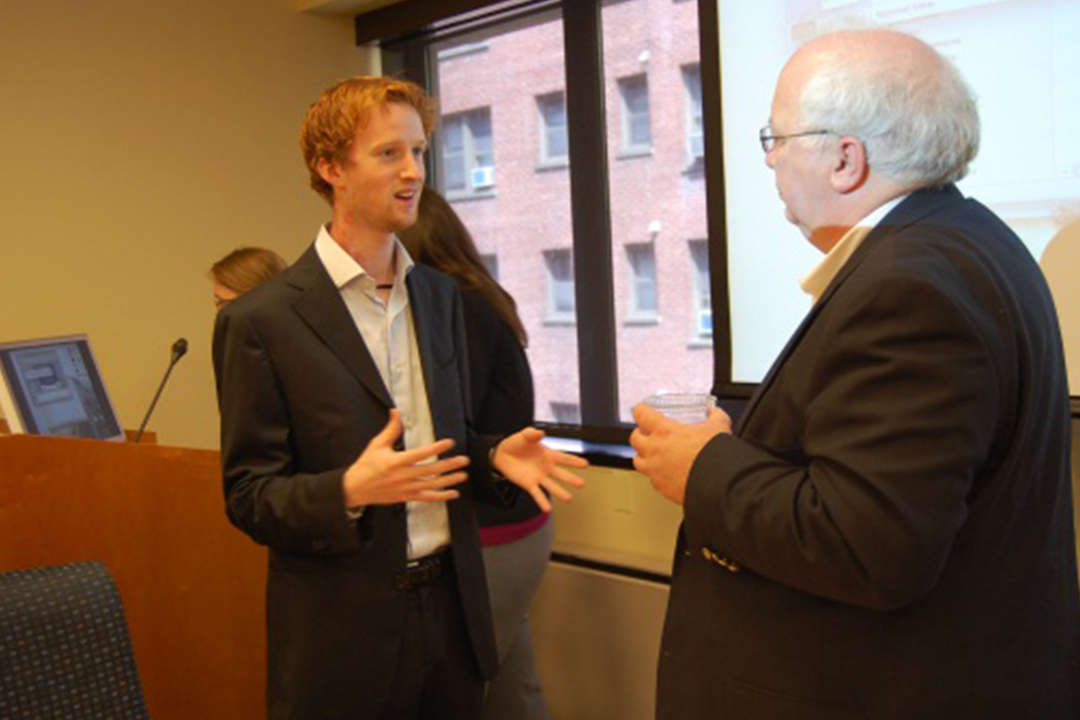As part of their capstone project, graduate students in Professor Henry Teng’s Environmental Resource Policy Program took on a new role: consultants to the Environmental Protection Agency (EPA) to develop strategies for addressing the health risks associated with contamination of the soil, water, and air in urban areas. Students analyzed and made recommendations on ways to identify, track, and treat potentially hazardous chemical substances and other pollutants that are the byproducts of the world’s industrial facilities.
“Our students were charged with addressing community awareness, ways to inform and educate disadvantaged communities about toxics release, and how to take advantage of EPA’s toxics release database to protect themselves,” explained Teng, the program’s director. “They also looked at globalization concerns for ways to standardize the toxics release databases in the world so that different countries can understand each other.”
Environmental Policy students Tim Meyer, Bill Ostrum, Amanda Peterka, Cassandra Reyes-Jones, and Matthew Stone collaborated with Steve Devito, head of EPA’s Toxics Release Inventory Program, and his team at the EPA to research the more than 50 Pollutant Release and Transfer Register (PRTR) systems worldwide and examine ways to use the datasets to assist in creating regulatory policy. (These systems collect and disseminate information on how much and what kind of toxic chemicals are released from industrial facilities into the environment.) The students compared the PRTRs using four main factors: production and employee threshold; common pollutants between the systems; categorization of industrial sectors; and accuracy and consistency of pollution release and transfer data. Based on their analysis, the following recommendations were made to the EPA, which will also be published in a government report:
- identify chemicals of special concern to compare across Pollutant Release and Transfer Register systems;
- identify chemical classes, such as pesticides, to create an accurate picture of global release of pollutants into the environment;
- pursue a “relative comparison” approach so that all systems are compared by equal standards to assist in tracking and informing policies and environmental laws for regulation;
- create guidelines for developing countries that currently do not have a method of tracking pollutants; and
- develop one comprehensive PRTR to view sustainability on a global scale.
Another group of capstone students—Catie Callahan, Pamela King, Rodrigue Kreilmann, and Amanda Mardiney—provided a detailed analysis of the Toxic Release Inventory (TRI) and identified factors that inhibit public participation and community engagement. Their recommendations to the EPA included building a community action framework to inform citizens about their rights and ways to take action, and building external support for community engagement with local and state governments.
“Both projects are multi-year tasks so we will be working with the EPA on a long-term basis,” said Teng. “The current projects will be continued by next year’s capstone students, with the goal being to recommend policies that can be implemented by the EPA.”
While this is the first year ENRP students have worked with the EPA, the program has been collaborating with the U.S. Department of Energy (DOE) for a number of years. For example, Kristin Quam, Dalton Shaughnessy, Blake Smith, and Benjamin Walsh teamed up with the DOE’s Office of Legacy Management this year to examine the feasibility of implementing a 4.5 megawatt solar array on a former uranium mine in Durango, Colorado, with the goal to increase the use of green energy. And in 2010, students traveled to the Navajo Nation in Arizona to analyze and address hazards left behind by the federal government's extensive uranium mining and milling operations during World War II. They worked with DOE officials to formulate a cleanup strategy and offer remediation proposals.
Image caption: ENRP student Rodrigue Kreilmann talks with Steve Devito, head of EPA’s Toxics Release Inventory Program after the capstone presentation.


